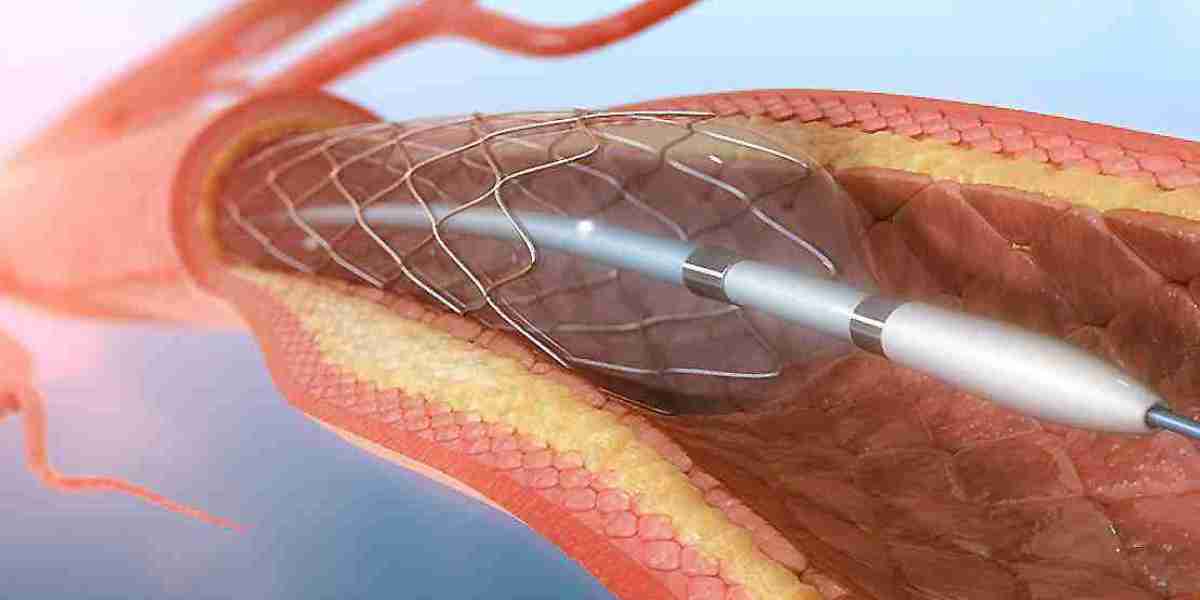The angioplasty balloons market is undergoing a transformative phase, marked by groundbreaking innovations that are redefining the standards of cardiovascular care. Among these, the development of bioabsorbable balloons and drug-coated balloons (DCBs) represents a significant leap forward in both technology and therapeutic outcomes. These advanced balloon types are not only improving clinical efficacy but are also reducing complications and enhancing long-term patient recovery.
The Evolution of Angioplasty Balloons
Traditionally, angioplasty balloons have been used to dilate narrowed arteries and restore blood flow, primarily in patients with coronary artery disease (CAD) and peripheral artery disease (PAD). While standard balloon angioplasty is effective, it has limitations such as arterial recoil, restenosis, and the need for stent placement.
These limitations have led to the evolution of specialized balloon technologies aimed at delivering improved outcomes with fewer long-term complications. The introduction of bioabsorbable and drug-coated variants has opened new frontiers in treatment options, particularly for patients who are unsuitable for permanent implants.
Drug-Coated Balloons: A Game-Changer in Vascular Therapy
Drug-coated balloons have revolutionized interventional cardiology by combining mechanical dilation with localized drug delivery. These balloons are coated with antiproliferative agents, such as paclitaxel or sirolimus, which are released into the arterial wall during inflation.
Key advantages of DCBs include:
Reduced Restenosis: DCBs significantly lower the risk of artery re-narrowing post-procedure, particularly in small vessels or areas where stent placement is challenging.
No Permanent Implant: Unlike drug-eluting stents, DCBs leave no foreign body behind, reducing the long-term risk of inflammation or thrombosis.
Versatility: Widely used in both coronary and peripheral interventions, they are especially beneficial for treating in-stent restenosis (ISR) and diabetic patients.
As more clinical trials validate their safety and efficacy, DCBs are gaining traction globally and are expected to play a central role in future angioplasty procedures.
Bioabsorbable Balloons: Pioneering Temporary Support
Bioabsorbable or biodegradable angioplasty balloons represent another promising innovation. These balloons are designed to provide temporary support to the artery during the procedure and then degrade naturally within the body over time.
Advantages of bioabsorbable balloons include:
No Residual Device: Once absorbed, the vessel is left free of any permanent hardware, preserving its natural function.
Reduced Long-Term Complications: Eliminates the risks associated with permanent devices such as chronic inflammation or device fracture.
Ideal for Younger Patients: Especially useful in younger populations or patients likely to require repeat interventions in the future.
Although still in the early stages of clinical adoption, bioabsorbable balloons are expected to grow rapidly with ongoing R&D and favorable regulatory evaluations.
Clinical Impact and Adoption Trends
The integration of these advanced balloon technologies is already demonstrating clear clinical benefits:
Improved Patient Outcomes: Shorter recovery times, lower recurrence of blockages, and fewer complications are being reported.
Expanded Treatment Options: These innovations allow physicians to manage complex lesions, ISR, and high-risk patients with greater confidence.
Growing Physician Confidence: As more data supports their effectiveness, interventional cardiologists are increasingly incorporating these tools into standard care protocols.
Leading manufacturers are accelerating their innovation pipelines, focusing on coatings, delivery precision, and vessel compatibility to further improve results.
Market Outlook and Innovation Landscape
With growing demand for minimally invasive procedures and better patient outcomes, the market for innovative angioplasty balloons is poised for strong growth. Regulatory bodies are showing support for these next-generation devices, and healthcare systems are beginning to recognize their long-term cost-effectiveness due to fewer repeat procedures and complications.
As bioabsorbable and drug-coated balloons become more mainstream, they will likely define the next era of cardiovascular intervention, gradually replacing traditional devices in many clinical scenarios.
Conclusion
The angioplasty balloons market is being redefined by innovative technologies that are enhancing both procedural success and long-term patient care. The rise of bioabsorbable and drug-coated balloons marks a pivotal moment in the evolution of minimally invasive cardiovascular treatments. With continued research, strategic investments, and regulatory alignment, these innovations are set to transform clinical practice and improve the quality of life for millions of patients around the globe.




